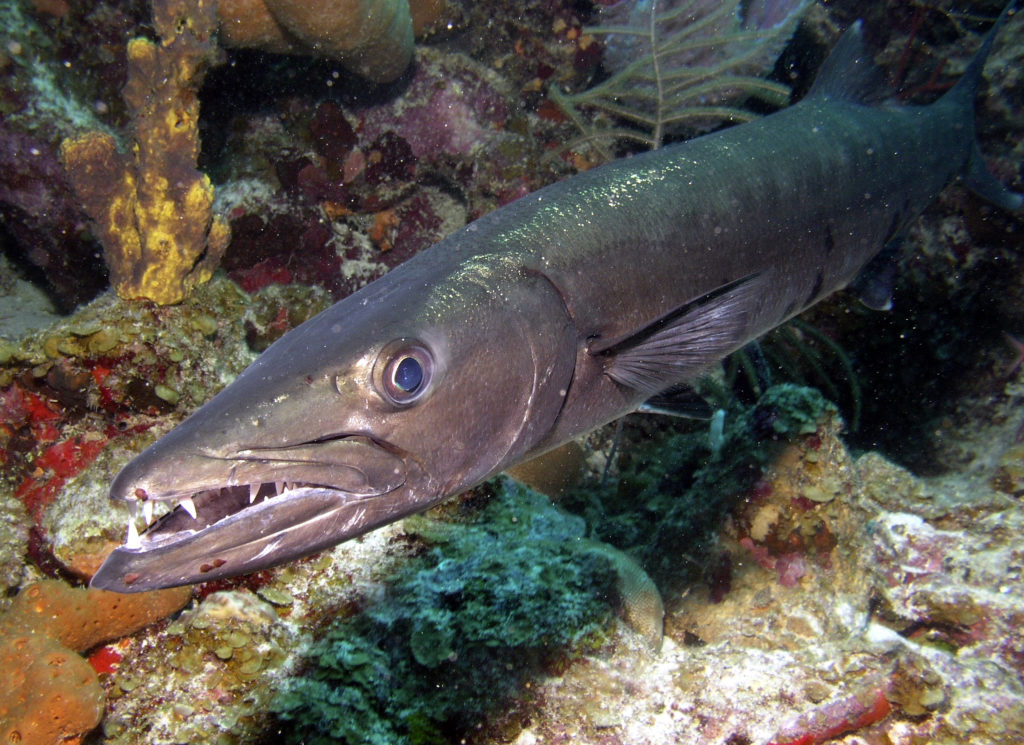By Breilly Roy; Sea of Change intern
Welcome to our fifth “Creature Feature!” Each week we briefly introduce you to some fascinating facts about a sea creature, why it is special and unique, and its conservation status. This week’s creature is the star of a song written by the band Heart and has one of the most daunting smiles in the ocean. Any guesses? It’s the great barracuda!

The great barracuda (Sphyraena barracuda) is known for its long body shape. Having an elongated torso, it looks like an underwater missile. This streamlined body shape allows the fish to move quickly underwater. They have been documented to swim in bursts up to 35 miles per hour! Not only does their speed help them escape hungry predators, but it aids in their hunting. Of course, their ferocious looking mouth also plays a big role in catching prey, though their vicious reputation is unwarranted – as with most sea creatures, if we respect them, they’ll do the same for us.
Unlike most fish, the great barracuda has two sets of teeth. Along the outside of the top jaw sits a row of smaller teeth, and behind them are dagger-like teeth. The bottom jaw houses long, needle-like teeth. Having dentition like this not only prevents the escape of prey, but it allows this top predator to grasp, tear, and cut up its catch before consumption.
As an adult they exhibit a nonsocial lifestyle, often hovering solitarily above coral reefs or wrecks looking for prey and defending their territory. Although, the great barracuda has been known to attack divers, such instances are rare. Some believe it is due to the species being attracted to a shiny object on a diver – so divers are warned to not wear watches or jewelry as a reflection might resemble the silvery fish the barracuda prey on. This species may seem scary, if you keep your distance, you have nothing to fear. The global conservation status of the great barracuda is of least concern according to the IUCN Red List. This species may seem intimidating, but when admired from afar one realizes the barracuda is an amazing fish that plays a vital role in its ecosystem.




